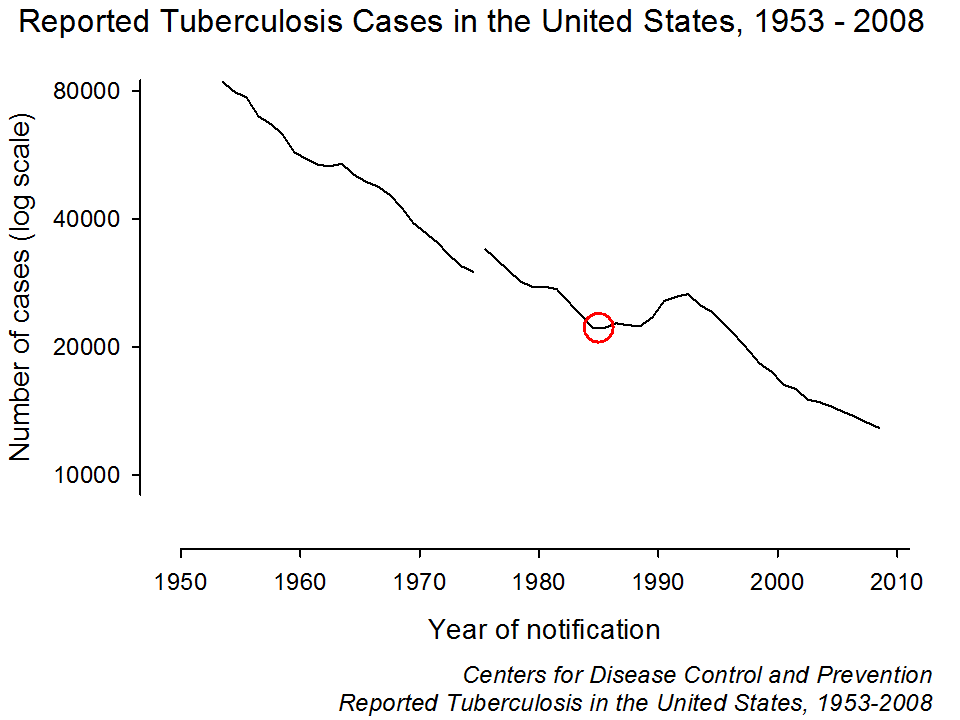 |
|
| |
|
|
| Slide |
083 |
Epidemiologic Basis of Tuberculosis Control |
 |
Next |
 |
 |
Previous |
 |
First |
 |
Last |
The United States has an exemplary surveillance system for notifiable diseases. States report weekly their notifiable cases, including tuberculosis, to the Centers for Disease Control and Prevention (CDC). In the simplest format, reporting is only a case count, where the emphasis is on sensitivity of the system and these cases, not yet verified, are published weekly in CDC's Morbidity and Mortality Weekly Report, most commonly recognized under ist acronym "MMWR".
Cases are also submitted with substantially more information on a case basis to CDC's Division of Tuberculosis Control and Elimination. This Division scutinizes each case whether it meets the criteria of a "verified case", thus adding specificity. The report on the final count of verified cases is annually reported after closure of a reporting year. The above graph shows annually reported and verified cases since uniform national reporting was introduced in 1953.
The red circle shows the year 1985 when tuberculosis unprecedentedly failed to decline. (the gap in 1975 is the result of a change in the reporting criteria and the leveling off in 1979 was the result of a large influx of refugees from Southeast Asia).
The leveling in tuberculosis cases in 1985 was recognized during the year, long before the final and verified case count was known, and how this was done will be shown in the slide after the next. |
| |
|
Go to top
Last update:
September 10, 2010